24 JUNE 2020 7:18 AM
Hotel dining rooms are beginning to re-open in North America, and here are steps hoteliers should take to ensure success.
Hotels and restaurants have been severely impacted by COVID-19. As hotel restaurants reopen, best operating practices are changing, as are brand dining
standards. To an extent, local authorities and restaurant associations are providing and will continue to provide guidance for reopening as operating restrictions
are lifted. However, food-and-beverage directors must do what it takes to ensure success.
Diner comfort
Many people are looking forward to returning to table-service restaurants. Others are concerned with the safety of doing so. In the jurisdictions that have
already reopened their dining rooms, the first customers are those most comfortable in dining rooms. The key to success will be having sanitation and safety
practices for guests and employees visibly in place for those less comfortable using dining rooms when they are ready. Word of mouth of such practices will
result in more people using your dining room. For most hotel restaurants, the key to success is attracting non-hotel guests. Being known as the hotel that’s
“doing things right post-COVID-19” will help.
Staff wearing masks—Both front-of-house and back-of-house staff should wear masks. Masks reduce the spread of pathogens from the wearer to
others. Instead of plain masks, customize masks that are appropriate for your restaurant (logos, patterns, etc.). Perhaps front-of-house staff could
wear a button with a picture of their faces to provide some personalization as hiding faces behind masks is counterintuitive to service culture. Masks
with smiles also allow this key aspect of service. Restaurants may wish to offer masks to guests for the walk to the tables, washrooms, etc.
No buffets or salad bars—Buffet breakfasts and other self-service options have been hallmarks of hotel dining. Such service styles have been
restricted in jurisdictions that have reopened their dining rooms. If you can’t convert breakfast to full-service, buffet attendants should serve food for
guests and social distancing measures should be put into place in the buffet/cafeteria servery area.
Reconfiguring dining spaces—Dining spaces need to be reconfigured to ensure proper social distancing is possible, ideally achieved by removing
tables or closing them where not possible. I don’t support adding plexiglass or other partitions between tables as the cost for this will not likely be
recovered. However, one restaurant put partitions between booths with the menu printed on them, which is a great idea. Similarly, waiting areas, host
stands and lounges must be reconfigured to promote social distancing. Consider notifying guests by text message when their table is ready.
Menus—Reusable menus will not be the norm for a while. Restaurants should provide no-touch or single-use paper menu options. Guests should be
informed menus are single use. Many restaurants already use chalk board menus throughout the dining room and, for others, these are easy to install.
Ensure that online menus are up-to-date and optimized for mobile phone use. Menus accessed by scanning a QR code on the table could also be
considered.
Sanitize—Historically, most restaurant cleaning and sanitation efforts have been conspicuous. This will change. Hand sanitizer should be available at
entrances and all server stations with servers visibly washing and sanitizing their hands between tasks. Clean restrooms regularly and, where possible,
implement strategies to prevent guests touching surfaces. Can doors be propped open without adversely affecting privacy? Touchless sinks, soap
dispensers, hand dryers, etc., will help ensure guest comfort. Hand sanitizer and waste baskets just outside the restrooms would also be appreciated by
guests. A staff member each shift should be designated responsibility for sanitization/health and safety practices.
Table setups—Tables should be sanitized between use and never pre-set. Silverware wrapped in napkins should be brought to the table once the
guest has been seated. Guests should be offered wrapped, disposable cutlery if not comfortable with reusable cutlery. Condiments, salt and pepper
shakers, etc., should not be left on tables and should be sanitized between use (and guests informed when delivered this has been done).
Food-and-beverage directors should rethink all food service operations with not just local regulations and restrictions in mind, but what can be done to make
guests feel comfortable that their health and safety is being protected.
Managing the income statement
Food-and-beverage directors must also consider how changes in restaurant operations will affect financial
performance.
Some customers won’t be comfortable with dining rooms—hotels not offering room service should consider this
possibility. A benefit of the pandemic has been the growth in takeout orders and curbside pickup. To the extent possible,
hotel restaurants should take part in these opportunities to grow revenue.
Labor expenses will be a key. I recommend developing labor matrices with the number of staff required by position at
Opinions
By Jeff Dover
Copyright © 2008-2020 CoStar Realty Information, Inc. Page 1 / 2
Food-and-beverage directors should rethink all food service operations with not just local regulations and restrictions in mind, but what can be done to make
guests feel comfortable that their health and safety is being protected.
Managing the income statement
Food-and-beverage directors must also consider how changes in restaurant operations will affect financial
performance.
Some customers won’t be comfortable with dining rooms—hotels not offering room service should consider this
possibility. A benefit of the pandemic has been the growth in takeout orders and curbside pickup. To the extent possible,
hotel restaurants should take part in these opportunities to grow revenue.
Labor expenses will be a key. I recommend developing labor matrices with the number of staff required by position at
various levels or hourly covers as opposed to set schedules by the day of the week. Restaurant managers, if they are
not already, will become competent at forecasting covers. With fewer tables, fewer staff will be required.
All expense items should be reviewed given the revised operations when dining rooms initially re-open and as operating
practices change as restrictions are lifted.
Jeff Dover is president of fsSTRATEGY, a consulting firm specializing in strategic advisory services for the hospitality industry, with an emphasis on
food and beverage. Contact him at jdover@fsstrategy.com.
The opinions expressed in this column do not necessarily reflect the opinions of Hotel News Now or its parent company, STR and its affiliated
companies. Bloggers published on this site are given the freedom to express views that may be controversial, but our goal is to provoke thought and
constructive discussion within our reader community. Please feel free to comment or contact an editor with any questions or concern.

